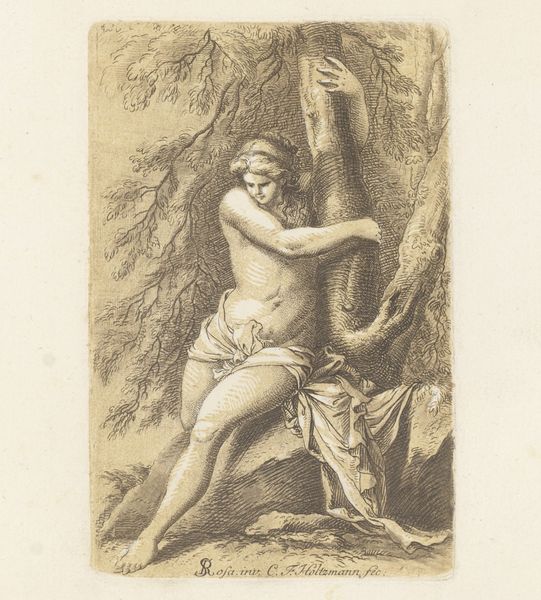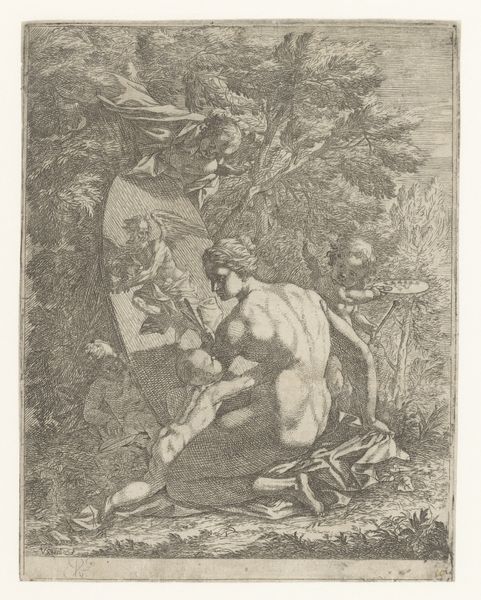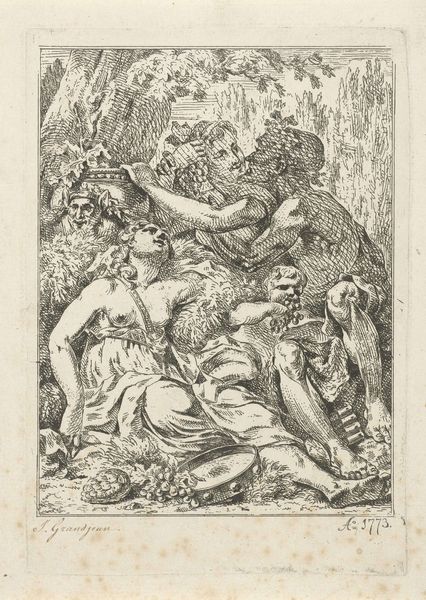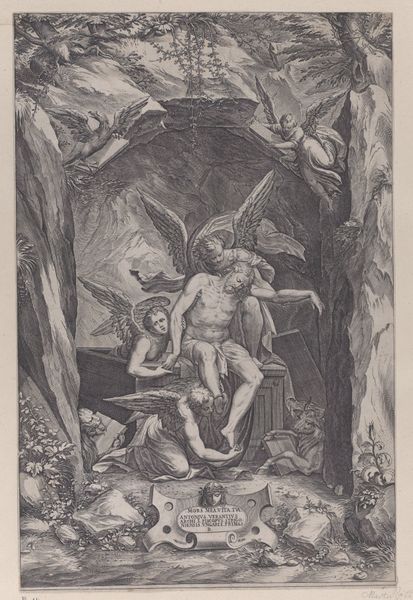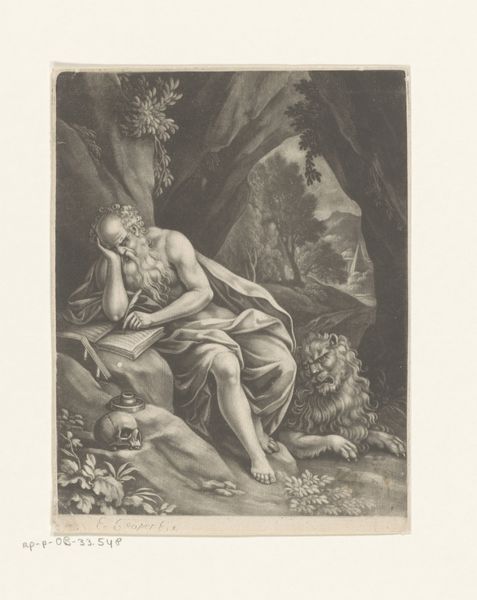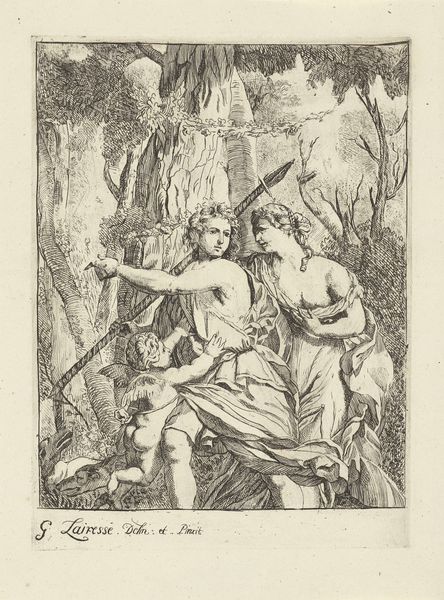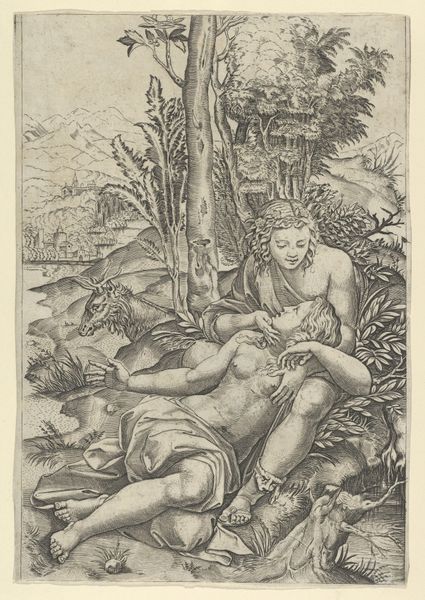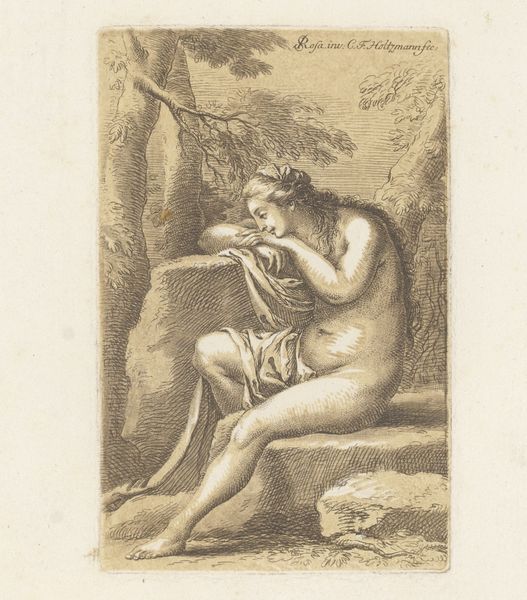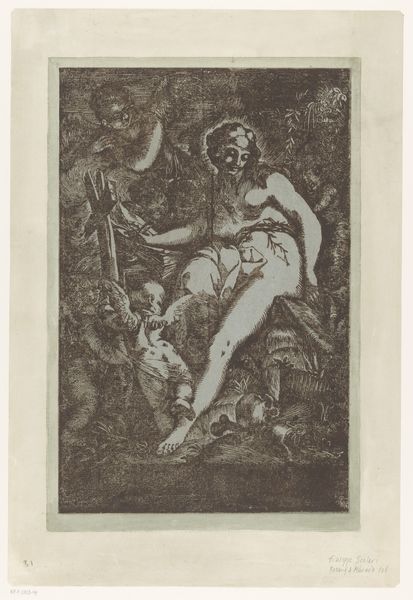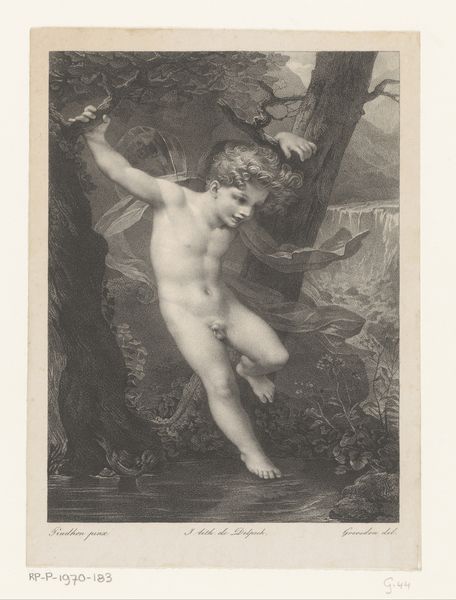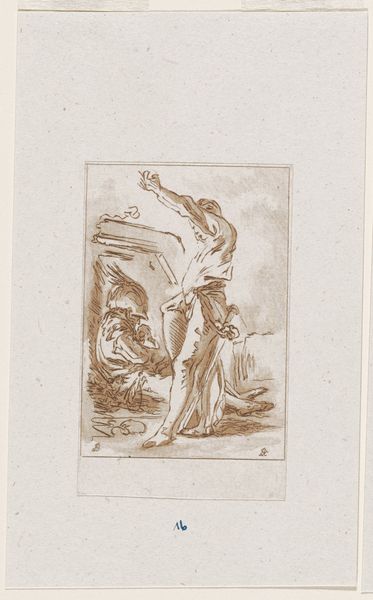
print, etching
#
allegory
# print
#
etching
#
old engraving style
#
mannerism
#
history-painting
#
nude
Dimensions: height 203 mm, width 278 mm
Copyright: Rijks Museum: Open Domain
Editor: This is Battista Angolo del Moro's etching, *The Repentant Mary Magdalene*, from around the 1560s or 70s, now at the Rijksmuseum. I'm immediately struck by the contrast between Mary's serene expression and the skull beside her, hinting at mortality. What layers of meaning are at play here? Curator: That's a great starting point! Looking at this etching, it’s impossible not to consider the social and cultural expectations surrounding depictions of Mary Magdalene in 16th-century Europe. Consider her transformation in religious doctrine over time. Before being solidified into a redeemed figure, Magdalene’s identity underwent a rather contested journey within religious interpretations. Why, do you think, might that be relevant to our reading? Editor: So, you mean how her identity shifted between a sinful woman and a symbol of repentance? That makes sense, especially with the "nude" tag that indicates sensuality associated with her earlier life that contrasts with the cross she is praying towards. It shows those competing ideas from back then. Curator: Precisely. Furthermore, prints like these circulated widely, becoming part of a visual culture shaping religious and moral perspectives among the public. So how might its presence as an easily reproducible artwork impacted its message? Editor: Because prints can be distributed so much more widely than paintings, perhaps this contributed to a standardization of her image and meaning? If more people had access to this artwork, her status as a penitent figure would have spread widely, thus reinforcing certain accepted messages about forgiveness. Curator: Indeed. The deliberate display of both Mary's vulnerability and devotion played a crucial role in communicating desired lessons and reaffirming the social position of the Church, right? It highlights how religious art served not just devotional but also instructional, and even, arguably, regulatory roles. Editor: I hadn’t thought about it that way, framing it as regulatory makes me consider power dynamics within art institutions differently! It's incredible to think about how a single print can reveal so much about the historical and cultural context. Curator: Absolutely, and exploring these contexts encourages a deeper understanding of not only art itself but also its interaction within societal norms, values, and authorities during a specific moment in history.
Comments
No comments
Be the first to comment and join the conversation on the ultimate creative platform.
